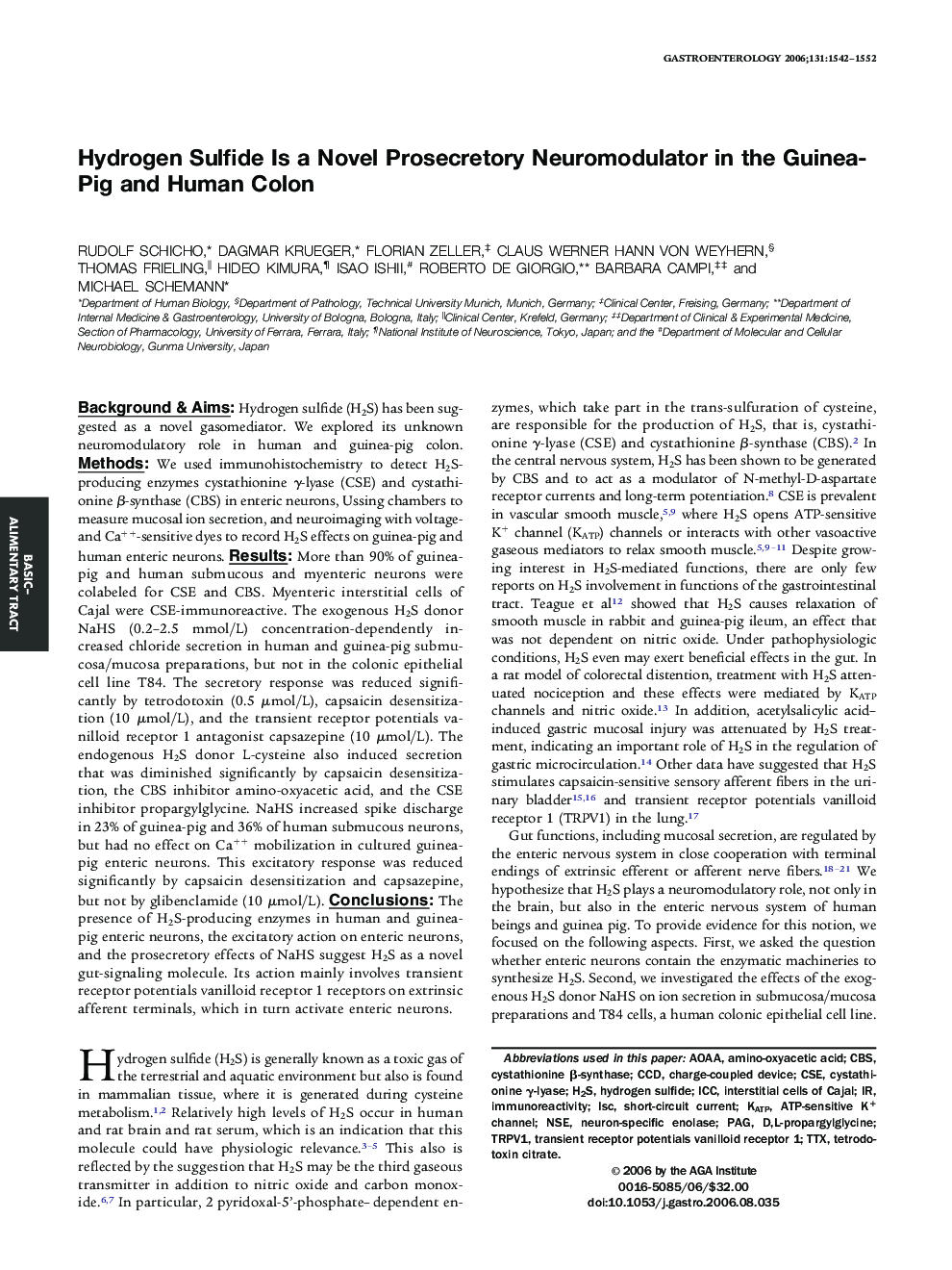| کد مقاله | کد نشریه | سال انتشار | مقاله انگلیسی | نسخه تمام متن |
|---|---|---|---|---|
| 3299805 | 1209937 | 2006 | 11 صفحه PDF | دانلود رایگان |

Background & Aims: Hydrogen sulfide (H2S) has been suggested as a novel gasomediator. We explored its unknown neuromodulatory role in human and guinea-pig colon. Methods: We used immunohistochemistry to detect H2S-producing enzymes cystathionine γ-lyase (CSE) and cystathionine β-synthase (CBS) in enteric neurons, Ussing chambers to measure mucosal ion secretion, and neuroimaging with voltage- and Ca++-sensitive dyes to record H2S effects on guinea-pig and human enteric neurons. Results: More than 90% of guinea-pig and human submucous and myenteric neurons were colabeled for CSE and CBS. Myenteric interstitial cells of Cajal were CSE-immunoreactive. The exogenous H2S donor NaHS (0.2–2.5 mmol/L) concentration-dependently increased chloride secretion in human and guinea-pig submucosa/mucosa preparations, but not in the colonic epithelial cell line T84. The secretory response was reduced significantly by tetrodotoxin (0.5 μmol/L), capsaicin desensitization (10 μmol/L), and the transient receptor potentials vanilloid receptor 1 antagonist capsazepine (10 μmol/L). The endogenous H2S donor L-cysteine also induced secretion that was diminished significantly by capsaicin desensitization, the CBS inhibitor amino-oxyacetic acid, and the CSE inhibitor propargylglycine. NaHS increased spike discharge in 23% of guinea-pig and 36% of human submucous neurons, but had no effect on Ca++ mobilization in cultured guinea-pig enteric neurons. This excitatory response was reduced significantly by capsaicin desensitization and capsazepine, but not by glibenclamide (10 μmol/L). Conclusions: The presence of H2S-producing enzymes in human and guinea-pig enteric neurons, the excitatory action on enteric neurons, and the prosecretory effects of NaHS suggest H2S as a novel gut-signaling molecule. Its action mainly involves transient receptor potentials vanilloid receptor 1 receptors on extrinsic afferent terminals, which in turn activate enteric neurons.
Journal: Gastroenterology - Volume 131, Issue 5, November 2006, Pages 1542–1552